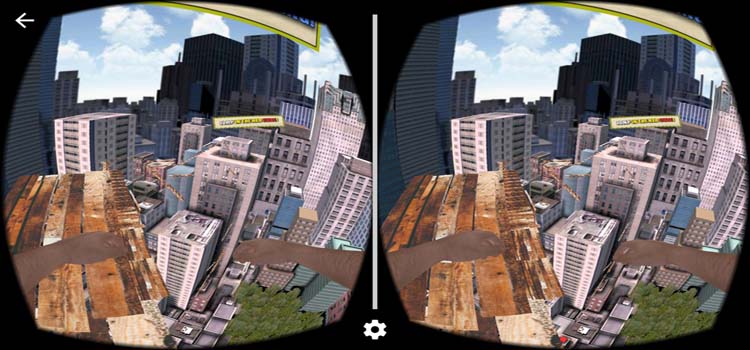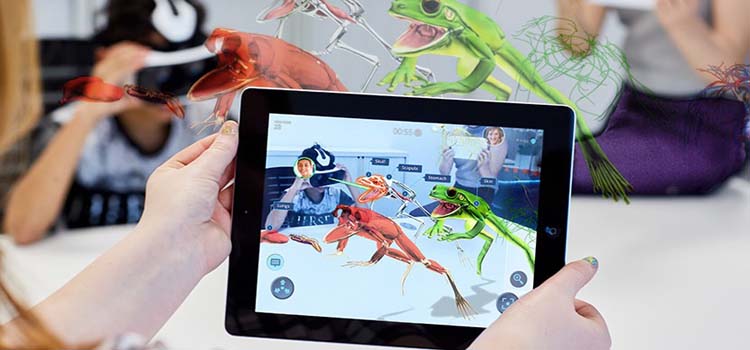VR Apps Are the Hottest Mainstream Experience

It might seem that until recently, virtual reality app development was a dream that seemed to be only for science fiction movies, but the truth is that stereoscopic videos, motion tracking headsets and interactive virtual experiences has been around since the 1970s. What has changed today is how accessible that technology has become to the public.
Thanks to incredible advances in VR tech, not only is virtual reality a real accessible interface today, but one that is affordable to the public. As a result, ushering in new advances in virtual reality software are of a greater priority than ever before for mobile app developers. These advances are coming so fast and furious, that the tech is growing and changing over the course of each year.

Fortunately, there are all sorts of exciting virtual reality technology available to the public today and because there is so much hype around it, more and more mobile app developers are jumping on the bandwagon to build new ways to interface with the interactive experience. There are two main challenges that VR tech is up against right now with the first being the struggle to build content that is useful enough to justify involvement with the tech, and the second being the creation of solutions that are either inexpensive enough to make it affordable for anyone to experience, or multifaceted enough to change the user culture in a way that makes having virtual reality an indispensable part of their day to day entertainment.
Both of these challenges come down to accessibility, and more specifically, the inevitable push to use Smartphone’s as the central component to utilizing experiences in virtual reality. Augmented reality app development today is focused more on creating solutions for simple accessories that a Smartphone can be slid into, allowing for a cost-effective virtual reality experience that is both portable and fulfilling. As more powerful technologies are still at a higher price tag, these accessories are where mobile app developers are currently focusing their efforts. However, even when working with this simpler technology, many things have to be in motion with your Smartphone at the same time to make the experience happen.
How the Lens and Display Functions

When you look inside of a virtual reality unit while an app is running, you will notice that the display looks rather curious. This is because there are two images that seem to look identical, but sometimes don’t fill the entire screen. Typically, it will resemble the way that images look on an old CRT monitor or tube television set while the rest of the screen looks black. On occasion, a white line will appear dividing the dual images.
These images are designed in a specific way to work in conjunction with any lenses that were part of the VR accessory package. While this is by far and away the most available type of VR today, the same basic concepts are used in larger more expensive units. These lenses, called Biconvex lenses, come in a pair and are what take any images shown on the display and distort them to correctly fill up the field of view when you wear the accessory. Your eyes are able to perceive all of the individual images as on singular, using stereoscopy to fool your brain into seeing an illusion of depth.
The whole basis of augmented reality app development depends on these lenses being able to exist in a fixed position. Because any type of VR tech aim to create a realistic virtual world that you can look around in and experience in real time, apps developed for these accessories must be created in such a way that anyone can pick up the tech, wear it, and begin having a seamless experience. This presents an extra challenge for anyone who wears glasses, as the accessory can become uncomfortable when pushed against them for extended periods of time.
Fortunately, there are new advances in both virtual reality app development and hardware that address these concerns. Some headsets have knobs on them that allow for the adjustment of focal length while the device is on your face. As long as apps are compatible, it allows the user to tweak it until they can see the virtual reality images on the screen clearly without having to wear glasses.
Moving About in Virtual Reality

At this point, most people have had an experience either using their Smartphone or video game console where some kind of physical movement became a critical part of the game experience. Whether this means tilting a phone to turn your character, swinging your hand to move a character’s limb, or some other kind of motion, the technology behind these concepts became the basis for creating movement systems within the virtual reality platform.
Every smart phone has a gyroscope and an accelerometer, which is what gives virtual reality apps an acute way of sensing both motion and position. This means you can tilt your head back and forth or spin a full 360 degrees and see the entirety of the virtual world that surrounds you while using the accessory. Currently, the technology is limited to fixed position experiences, which means there is no way to physically walk around to take in more of the experience. While there are mobile app developers working on making this concept more accessible, current apps rely more on creating a simulation that gives you the sense of moving around, even though in reality, you remain stationary.
Different systems have different ways of tackling the concept of movement. Some have extra tech including another magnetometer, accelerometer, and gyroscope to build a more seamless experience with greater amounts of data points. This makes a more precise head tracking system that allows the virtual world you are in to seem more polished. Some accessories also utilize fixed point and external sensors for additional position and movement tracking. As the technology continues to develop, the immersion interface will continue to become more flawless.
The Future of the VR Experience

While much of the VR experience today involves head tilting with an accessory on your face, there are some other new and upcoming advances that offer promising new experiences. There are several new apps and more in development that allow you to utilize the headset in conjunction with a controller. Other companies are working on wearable that you can put on your fingers and other body parts with extra knobs and buttons. Virtual reality accessories bring the promise of a more multifaceted experience.
Ultimately, virtual reality is a technology in its infancy, but considering what a fulfilling experience it already brings to users, this is a good thing. Companies working both in hardware and software around the world are prioritizing their efforts to make this technology even more amazing. In the near future, virtual reality may wind up becoming an indispensable part of the Smartphone experience with applications beyond gaming. In the meantime, there is plenty to check out now.






